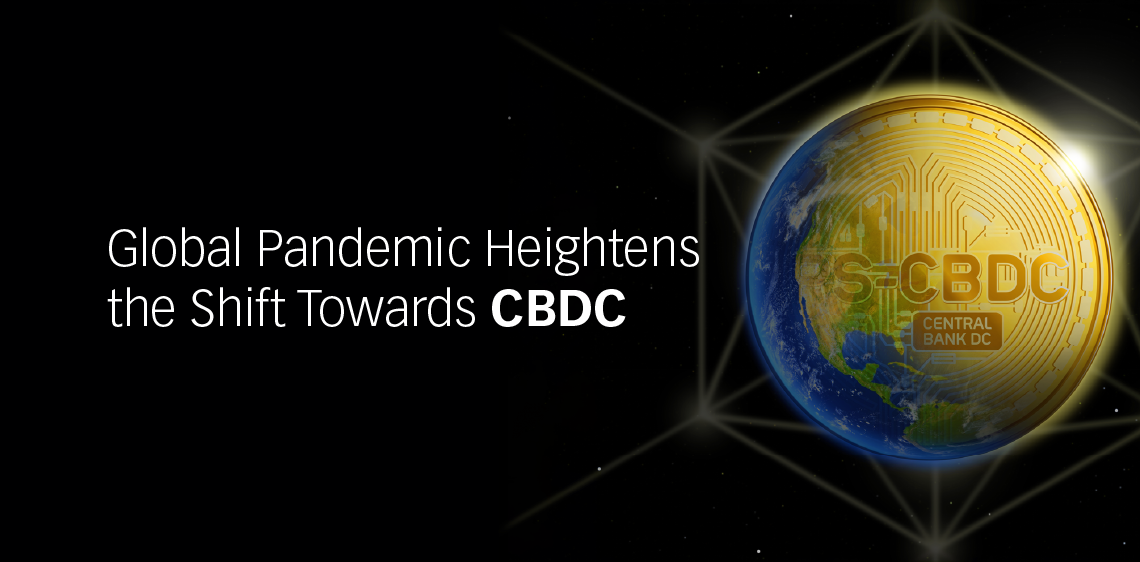

Traditional money today
Money is a social institution that has evolved over millennia, with each form of money unequally serving one or more of the necessary functions as a reliable medium of exchange, unit of account, or store of value. None of the existing forms of money, however, have proven to satisfy all the necessary functions at once. For example, while electronic money is a convenient medium of exchange, it does not serve the function of being a reliable store of value, unlike gold or diamonds.
Today, central banks provide these forms of money along with risk-free means of payments for the general public, banks and financial institutions. Traditionally, the general public can hold central bank money in the form of banknotes, whereas banks and financial institutions can hold central bank money in the form of electronic money in bank reserves.
Coronavirus and the shift towards digital money
With the growing demands and rapid evolution towards a digital economy, more central banks across the globe are now considering and experimenting the issuance of their own digital money; a Central Bank Digital Currency (CBDC) that is universally accessible, extensively used by the general public to conduct transactions and maintain a secure store of value, and most importantly, a fully governed and electronic form of central bank money.
Further accelerating central banks’ considerations for the issuance of CBDC, is the Coronavirus (COVID-19) global pandemic. While there is little evidence that banknotes transmit the virus, Mr. Benoît Cœuré, the Head of the Bank for International Settlements Innovation Hub, emphasized the effect of the pandemic on digitization across our lives in a recent panel discussion and noted that "Economic historians will remember COVID-19 as the event that pushed CBDC development into top gear."
In an interesting ‘Payments after the COVID crisis – emerging issues and challenges’ speech, Ms. Christina Segal Knowles, the Executive Director for the Financial Markets Infrastructure (FMI), also highlighted the importance of CBDC as a safer alternative for the dominance of private money that presents new opportunities that meet the digital economy’s future payment needs, addresses the consequences of a decline in access to cash, and provides a building block for better cross-border payments.
Why central bank digital currency?
In such times of crisis, Government-to-Person (G2P) payments are critical. Governments worldwide have been looking for ways to effectively respond to the economic and social consequences of COVID-19, with some trying out several traditional ways to distribute cash safely to an extended number of people. However, there are massive limitations to these traditional ways, especially when physical interactions are discouraged. Accordingly, governments have been considering CBDC as the new instrument that can provide direct financial transfers to people outside of traditional social protection mechanisms.
In addition, unlike unregulated digital currency such as Bitcoin or other cryptocurrencies, CBDC is fully regulated, governed and monitored by the central bank. It acts as a legal tender and maintains a one-to-one exchange rate with the national currency while providing a risk-free alternative to bank accounts and private money that mitigates financial and credit risk at payment systems and enhances financial stability.
Its ability to stimulate the economy at times of recession through unconventional monetary policy tools such as helicopter money, money financing, or quantitative easing has also been investigated and analyzed by economists in several works and literature. CBDC also encourages new competition with banks in the form of technological innovation and customer service, enabling new market entrants and ultimately facilitating modernized financial services.
CBDC technological approaches
There are several technological approaches to which CBDC can be implemented. The chosen approach has a significant impact on the level CBDC will meet the central bank’s overall objectives and the design decisions associated with it. For example, to be universally accessible by the public, a blockchain-based CBDC would need a resilient and always available network across the country.
Arguments that CBDC could be implemented using the current traditional technology stack, to some extent, are valid. For instance, distributed applications and grid computing architectures already provide high resiliency and effective transactions throughput. However, a blockchain-based approach is deemed more secure since it allows for a decentralized, consensus-based solution. Unlike distributed or cloud-based solutions, decentralization guarantees that each instruction executed in the network requires consensus between participating nodes, thus building an immutable and irreversible ledger with one source of the truth.
In addition, blockchain-based CBDC allows the introduction of ‘programmable money’ to accelerate the shift towards a digital economy. Programmable money is implemented through a smart contract which runs inside the blockchain network and self-executes contract terms and conditions. This allows for the emergence of new innovative products and services e.g. bonds, stocks and equities that utilize blockchain as an infrastructure and innovation platform.






